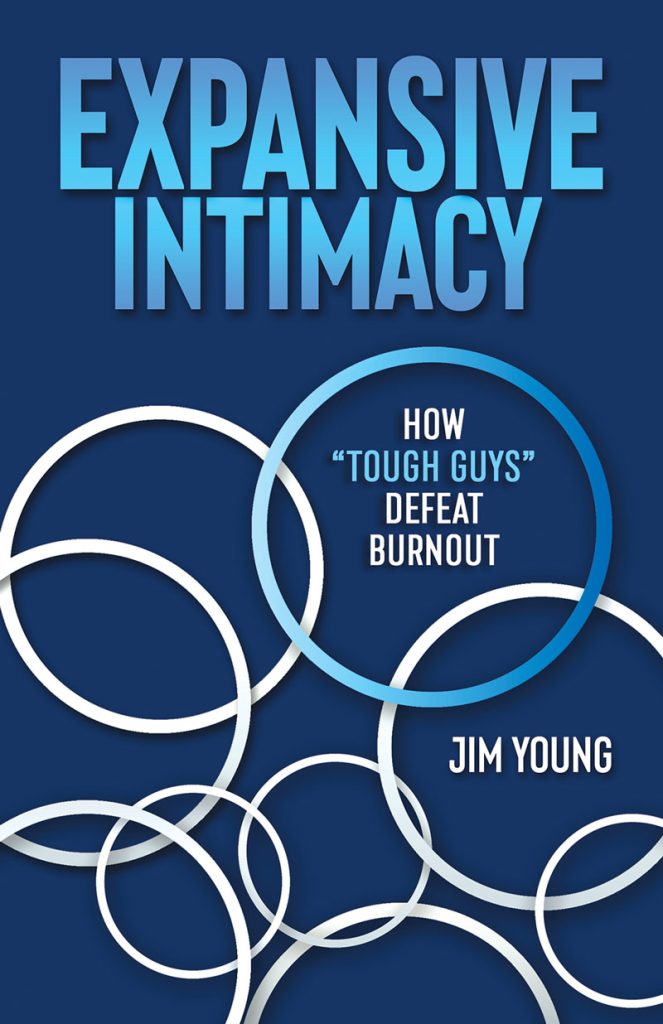Local Executive Coach Writes the Book on Defeating Burnout
Cooling Agent
“I had a major problem, and I needed a solution. Fast. So I decided to use the best strategy I had: outworking the problem on my own until either it was resolved or I collapsed. It was an easy choice, really. Up until this point, I had a 100 percent success rate in winning those battles. Besides, failure wasn’t an option. I’m a man. We don’t fail, and we don’t need help.
This time I was different. I knew that because of the carpeting.

Until that point in my life, I had never spent time inspecting the nuances of the flooring of my tiny, two-bedroom condo. But there I was, planted face down in the middle of my living room floor, drenched in sweat, tears streaking down my face, anguished groans occasionally escaping my writhing body. The abrasiveness of the matted Berber carpet felt harsh on my nose, forehead, and cheeks. Its aroma, stale and slightly chemical in nature, reeked of atrophy. It was not a pretty scene.
As I lay there uncontrollably sobbing, shaking from waves of stress pulsing through my depleted body, it was clear that I wasn’t OK.”
That’s a very powerful, and poignant, passage from the introduction to Jim Young’s recently released book, titled Expansive Intimacy: How “Tough Guys” Defeat Burnout.
Young, a Northampton-based coach who calls himself the “Centered Coach,” and before that an IT executive, has become an expert on the subject at hand — burnout — and defeating it. He’s been there and done that, as we can discern from his introduction, in which he talks about an assignment to revive a major client’s IT system, one that, coupled with other factors ranging from his grandmother lying on her deathbed to being six months into divorce, sent him nosediving into that aforementioned Berber carpet.
He’s also helped others defeat burnout, but only after they managed to find the strength to do what most men strenuously resist doing — first admitting that they need help, and then getting that help.
“I often describe myself as a men’s and organizational burnout coach,” he told HCN. “Because that’s who keeps finding me; that’s the work I’m most compelled to do, to help men deal with this condition we call burnout.”
In a wide-ranging conversation about his book and the broad subject of burnout, Young said this term gets thrown out almost daily in the workplace, usually with little regard for its true meaning and symptoms.
Indeed, burnout is, in most respects, a technical term. It doesn’t mean tired, or exhausted, or exasperated, he said, adding that there are several symptoms, and also what he called the “burnout spectrum” in which individuals experience some but perhaps not all of these symptoms.
“The term has gained a lot of buzz over the past few years — the pandemic has pulled the curtains back on this topic, which has really been there for a long time,” he explained. “I think we conflate it oftentimes with being tired or exhausted. People say, ‘I’m burned out today’ … it’s a bigger issue than that.
“The World Health Organization finally, in 2019, recognized that burnout was a workplace condition of unmanaged stress with three components,” he went on. “Exhaustion, for sure, whether we’re physically, mentally, or emotionally exhausted, but also cynicism and a lack of effectiveness; we don’t feel like we can get things done anymore, and we can start taking a cynical approach that things are never going to get better — a mentality of ‘it is what it is.’ A true case of burnout involves all three of those symptoms, and there are people all across the burnout spectrum who might be dealing with one or two of those symptoms, but not all three.”
With that broad definition, and that list of symptoms, which a great many individuals in business can relate to, how does one go about defeating burnout and put it behind them?
It starts, as Young said, with admitting that there is a problem, something he finally did, and then doing something about it rather than trying (almost always unsuccessfully) to tough it out, which is what ‘tough’ guys usually try to do.

For this issue, HCN talked with Young about burnout, his new book, and that concept of expansive intimacy, which, in his view, is the only way to get at the root of this problem.
When the Heat Is On
When asked how people know, or should know, if they are burned out, Young said that he — and probably many others — don’t actually know in the moment.
“I lived on the burnout spectrum for five to seven years, and I floated through different aspects of it,” he explained. “I didn’t know it when I was in it until I looked back at it and remember not wanting to get out of bed and go to work in the morning. I felt like I was moving in wet cement as I was trying to get things done.
“To me, a lot of it is the felt sense of it, but also, how are people around me responding to me?” he went on. “And if I could be honest with myself, I would ask people, ‘hey, was I difficult to be around? Was I less effective than I was before? Did I come across as someone who never had something positive to say?’ We’re feeling like we’re not getting things done that we’re capable of. That’s the best answer for me when it comes to knowing when we’re burned out. There are assessments we can take, but I always come back to how we’re feeling and getting some perspective from other people on how I am compared to when I’m at my best.”
Elaborating, Young said people and can and often do have bad days, bad weeks, and bad months. But burnout is longer-term. It’s a persistent feeling of simply not feeling like yourself, accompanied by some physical symptoms.
These can include indigestion, lower back pain, and other ailments that cannot be easily explained, he said, adding that these problems equate to stress building up in the body — stress that, if not relieved, will lead to deeper issues.
It’s incumbent upon individuals, and especially men, because often, they don’t listen to what their body is telling them, Young went on, adding that, if they listen hard enough — and he eventually did — they will come to understand that the problem might be burnout.
And this brings us to the next step in this assignment — deciding what to do about it, be it taking time off, finding a new job or career, seeking counseling or coaching, or some mix of the above.
“And that often depends on how crispy you are,” said Young. “Some people, when they’ve had an extreme case of burnout, really need to decompress; I’ve dealt with people who have had to take long-term leave and just not do anything for a while, but that’s not something that a lot of people can do.
“For me, when I started looking at how I defeated burnout and what I wanted to share with others, there’s a ton of practical advice that you can Google; it will talk about exercise, it will talk about diet, it will talk about shifting your work schedule and maybe even changing jobs. Those are all valid things to do; however, they’re just putting Band-Aids on symptoms. They’re not actually getting to the root cause.”
Elaborating, he said the biggest problem he had with burnout — and the problem that most people have — is the isolation and the feeling that he had to deal with it alone.
“When I pulled back all he covers, when I rewound the story, I realized that the thing that got me out of burnout was to stop isolating myself and create intimate connections in all areas of my life so I always had a place to go when my stress was built up,” he told HCN, adding that this is a difficult assignment for many men.
How do they get over that hurdle?
“I think the answer to that is to look at our shame, which is not a word that guys want to talk about, but it’s there,” said Young, who related his own experiences to drive home that point. “If the reason I got into burnout was because I kept comparing myself to the men around me, to my peers, to the people who were a few steps ahead of me on the path, and feeling that I don’t measure up, then I have to double down; I have to outwork everyone. I definitely can’t ask for help; I can’t reveal any of that to anyone because then I’m going to really hear it from the guys. And that’s not OK.
“So I suffered in silence and tried to tough it out,” he went on. “The problem is, the hole kept getting deeper, and so, when I wrote the book, I knew I wanted to write about burnout, because it was a horrible experience for me, but I also knew I wanted to write about intimacy and intimate connections in every area of my life, which was actually the real antidote that got to the root cause. But I didn’t realize that I was going to see shame come up so prominently; as I interviewed dozens of men about it, I got the same story — the fear of being called out by other guys because we’re not man enough to deal with our business and we got burned out is a huge obstacle.”
Bottom Line
Clearing this obstacle is difficult, Young said in conclusion, but it is the first big step toward defeating burnout and moving on from it.
It’s the first step toward picking oneself up off the floor — figuratively, or, as we saw in Young’s own case, and probably many others, quite literally.



